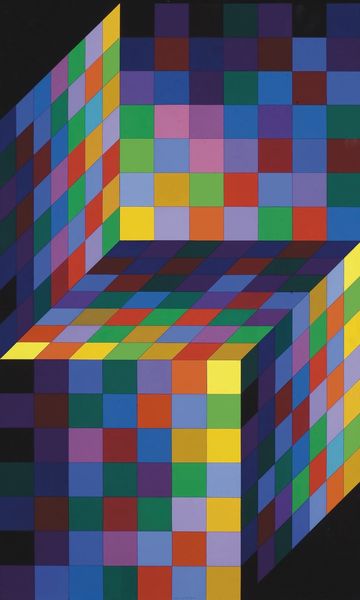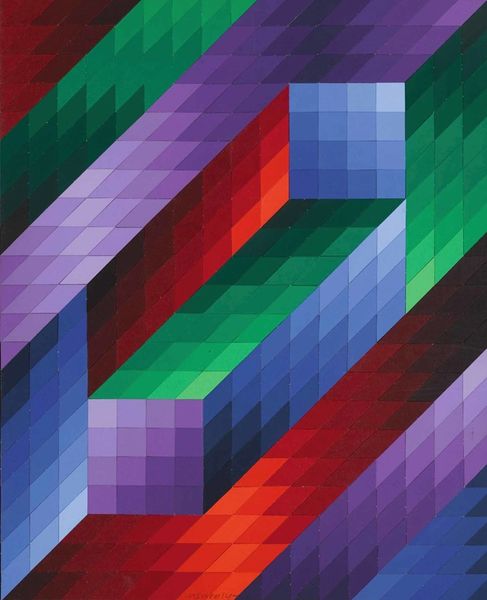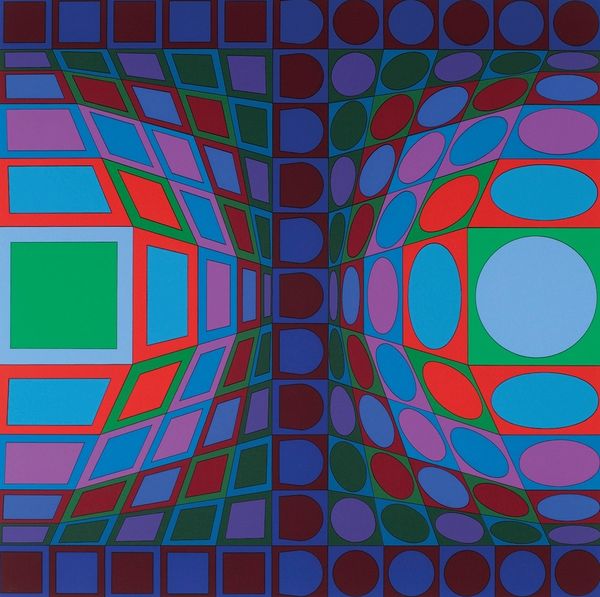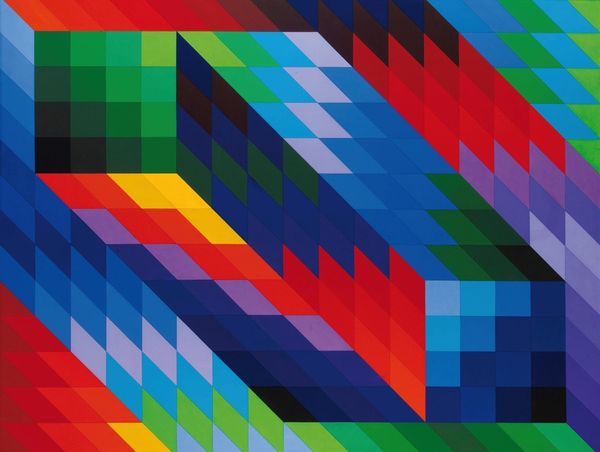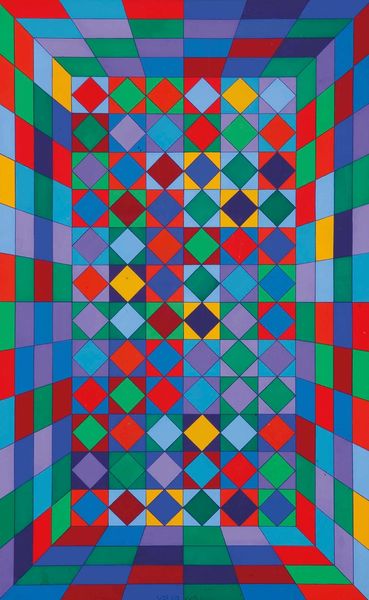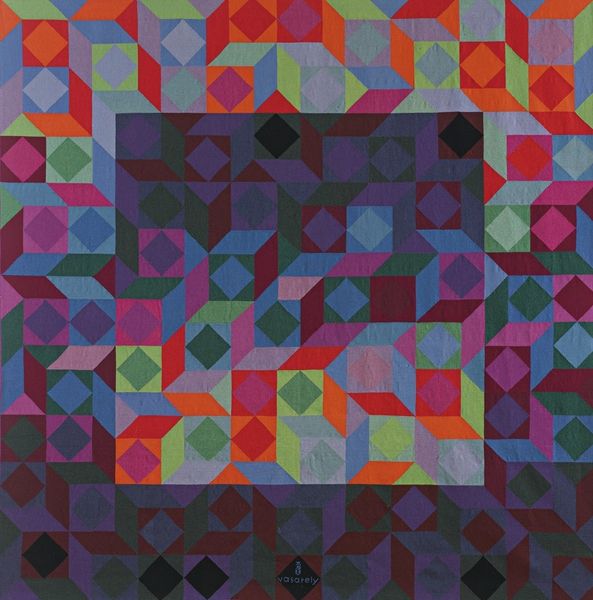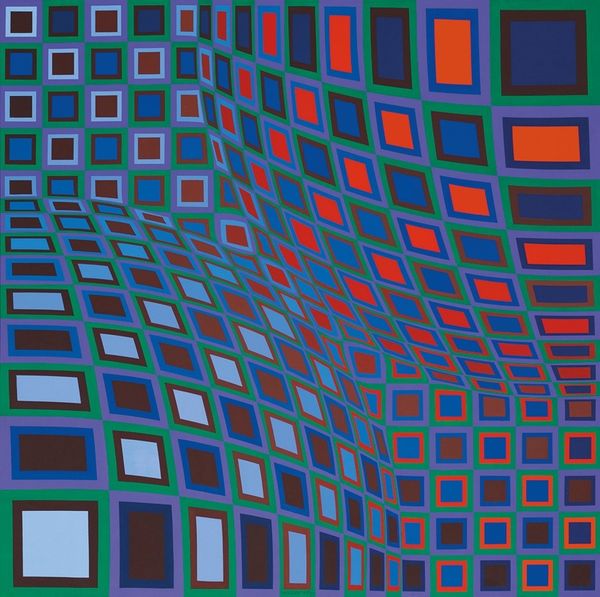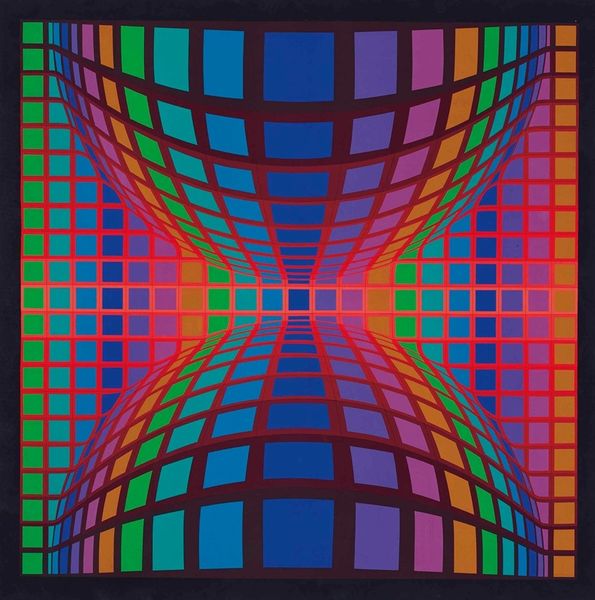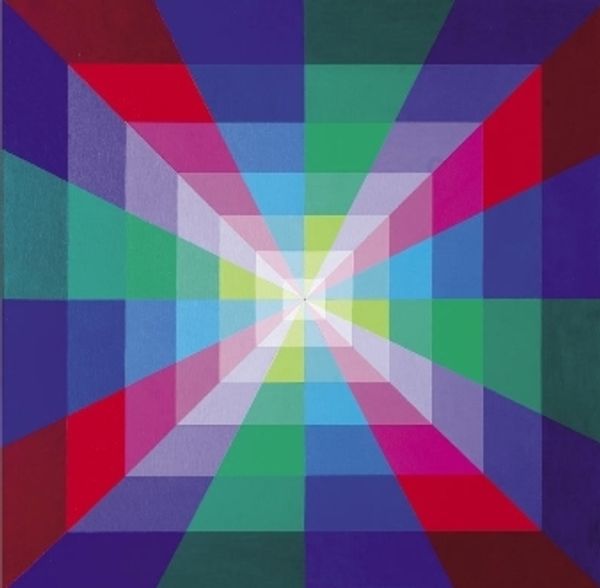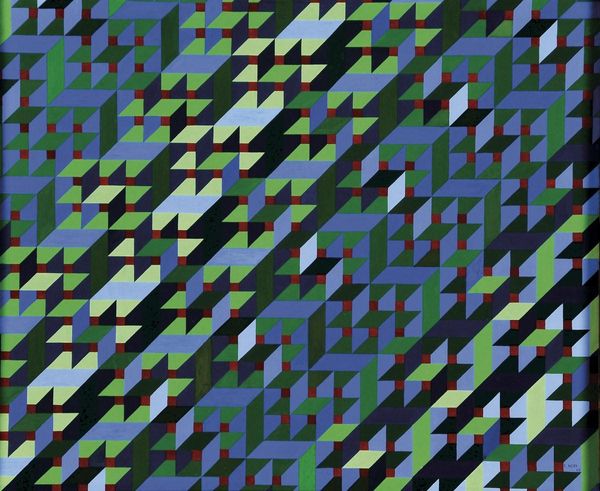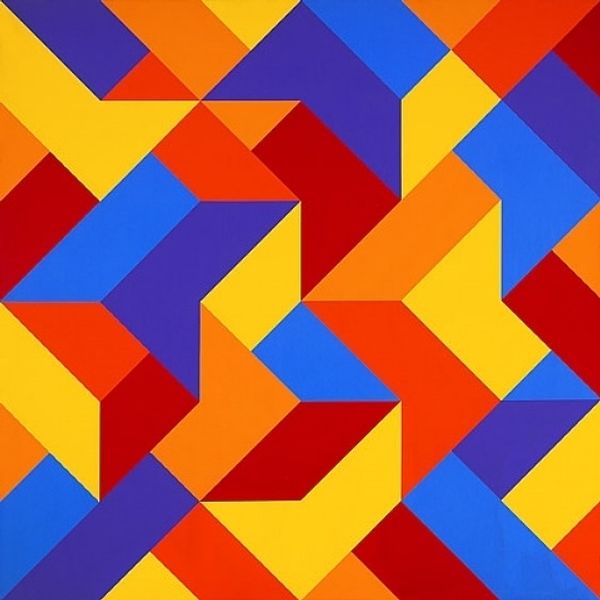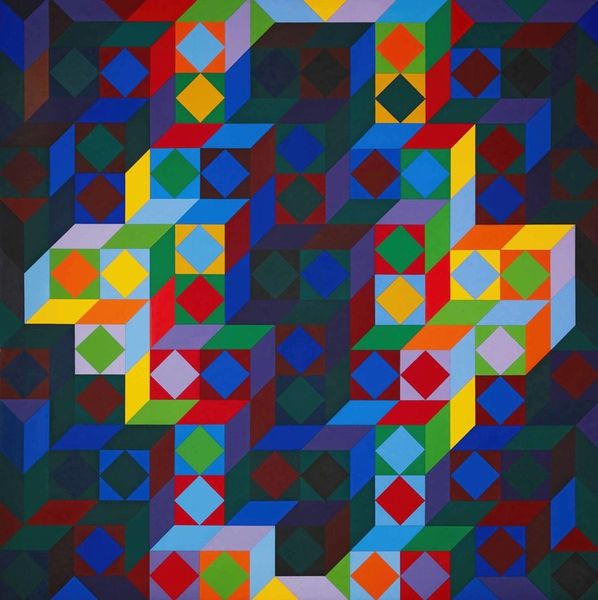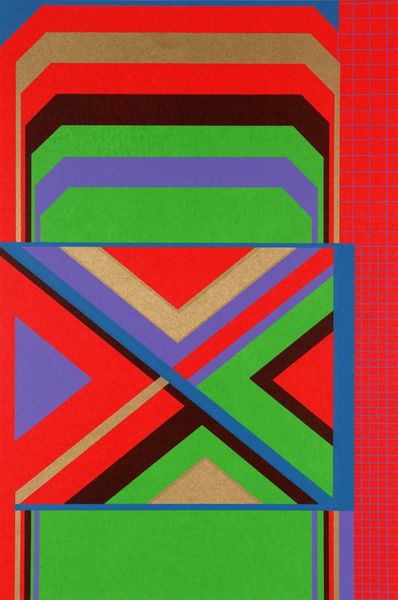
acrylic-paint
#
op-art
#
acrylic-paint
#
geometric pattern
#
minimal pattern
#
geometric
#
geometric-abstraction
#
modernism
Copyright: Modern Artists: Artvee
Editor: Here we have Victor Vasarely’s "AXO 66," an acrylic on canvas work from 1969. All those squares trick my eye into seeing depth. It feels like a room folding in on itself, or maybe an Escher drawing. What's your interpretation? Curator: Well, viewing this piece through a historical lens, it’s essential to recognize Vasarely’s role in popularizing Op Art. “AXO 66,” like much of his work, reflects a mid-century optimism rooted in technology and industrialization. Does that checkerboard pattern evoke for you the logic of early computer graphics? Editor: I can definitely see the digital resemblance. Were these geometric shapes seen as a utopian ideal? Curator: Exactly. Many Op Artists believed abstract forms, meticulously arranged, could tap into fundamental structures of human perception, promoting universal visual language. The widespread embrace of Vasarely’s aesthetic, you'll notice, coincided with a period of immense social change and a thirst for innovation. We must consider the exhibition venues that validated his imagery and the sociopolitical factors that caused audiences to yearn for an orderly, rational sensibility in painting. Do you find “AXO 66” successful in conveying that sense of order? Editor: Thinking about the historical context helps to solidify the artist's intentions. Thank you! Curator: It makes one question whether Op Art's reliance on optical effects and geometry could be used beyond pure aesthetic enjoyment and extend to social purposes and progressive change. That tension remains a topic for discussion today.
Comments
No comments
Be the first to comment and join the conversation on the ultimate creative platform.
